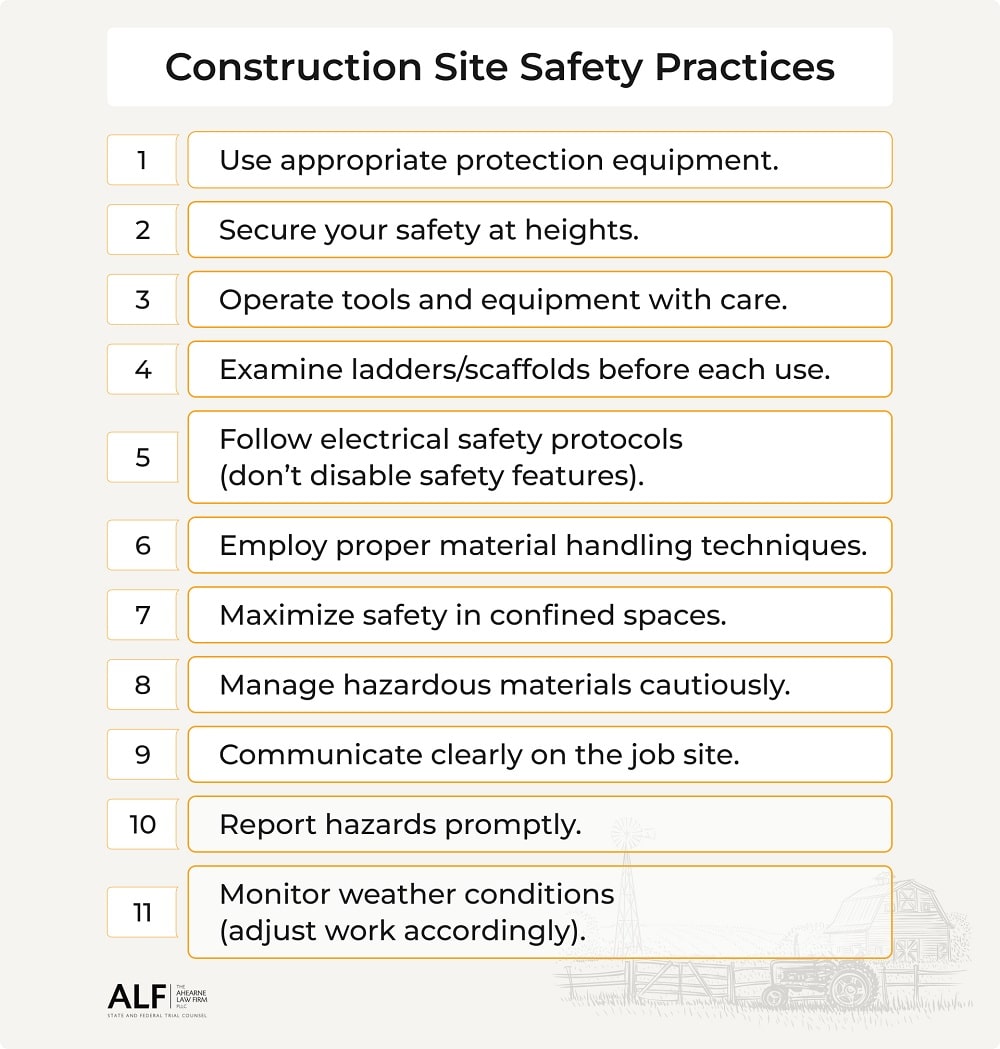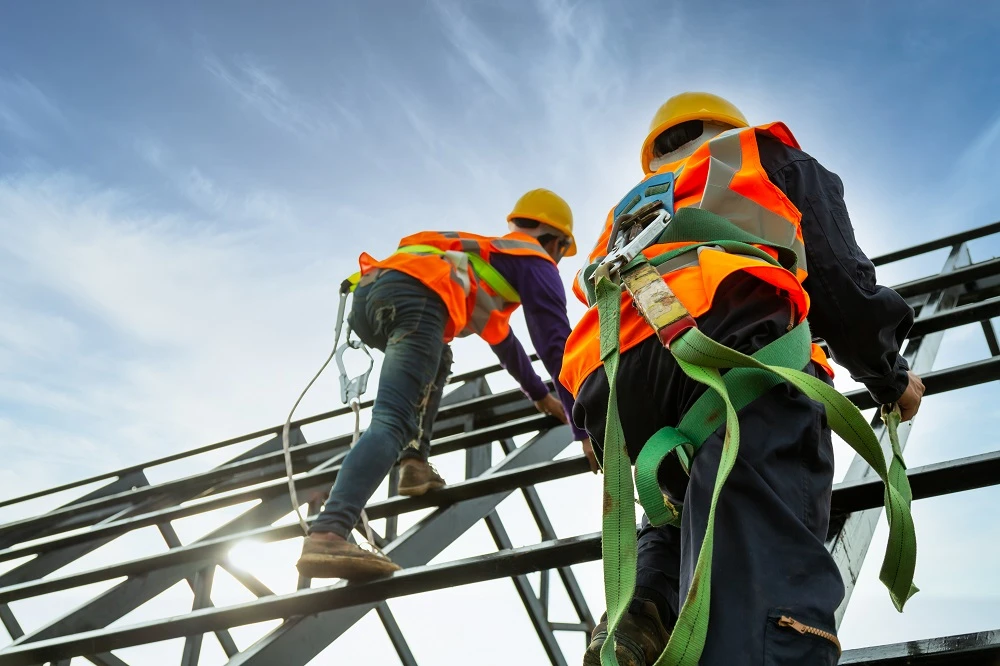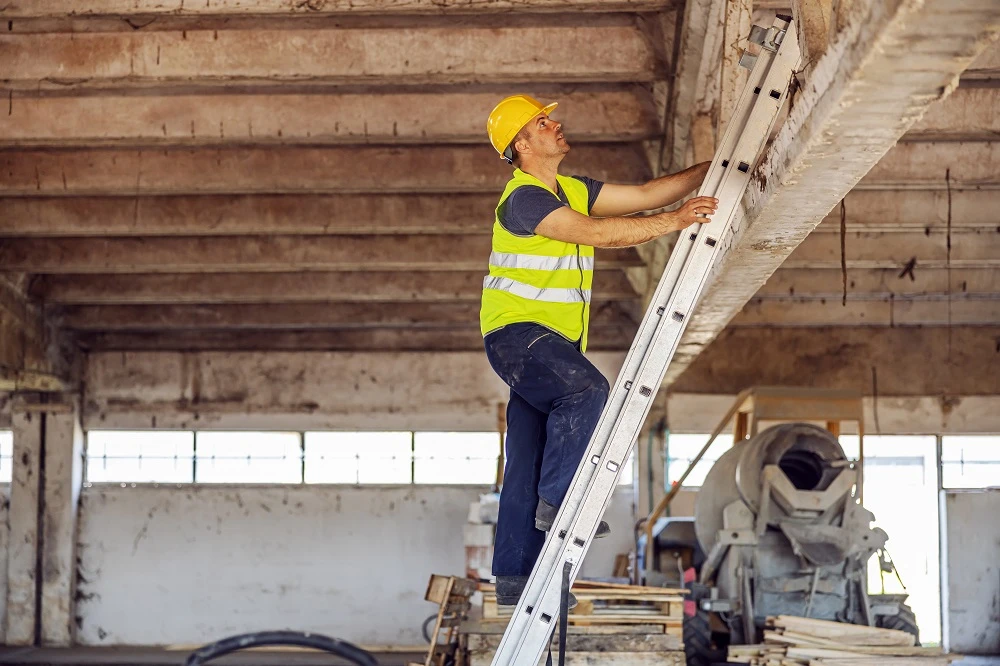Every day, millions of construction workers across America step onto job sites, facing significant workplace risks to build our nation’s infrastructure. For them, following proper safety protocols isn’t just about compliance — it’s about returning home safely to their families each day.
As Hudson Valley construction accident lawyers, we have worked with countless injured workers who wished they’d had better safety information before their accidents occurred. We’re sharing these essential construction site safety rules to help workers protect themselves and their colleagues on the job. Whether you’re a veteran of the construction industry or new to the field, these guidelines will help you maintain the utmost importance of safety in your daily work.

1. Always Wear Appropriate Personal Protective Equipment
Your personal protective equipment (PPE) serves as your first line of defense against workplace hazards. Occupational Safety and Health Administration (OSHA) regulations spell out specific safety gear requirements to protect workers from serious injuries. On construction sites, different tasks create unique risks throughout the day — from falling objects to hazardous materials.
That’s why proper PPE selection matters for every job you tackle. Site operations demand constant attention to your protective gear’s condition and proper fit.
Construction workers need to master their PPE requirements for every shift. Daily inspection of your safety gear isn’t just a good practice — it prevents accidents that could change your life forever.
Essential protective gear includes:
- Hard hats that meet current safety standards.
- Steel-toed safety boots with ankle support.
- Impact-resistant safety glasses with side shields.
- Task-appropriate work gloves.
- High-visibility clothing for site conditions.
- Hearing protection for noisy operations.
- Respiratory protection when needed.
2. Prioritize Fall Protection
Falls remain the leading cause of serious injuries in the construction industry, making proper fall protection your top priority when working at heights. Personal fall arrest systems provide essential protection, but they work only when used correctly. Many experienced workers have suffered falls after skipping “just one” safety step. Fall hazards exist on every construction project — from open edges to floor holes.
The construction site demands complete focus when working above ground level. Safety nets and guardrails add protection, but your attention to proper procedures creates the foundation for preventing falls from heights. Every component of your fall protection system must work perfectly to keep you safe. That’s why daily inspection of your equipment and careful attention to anchor points can save your life.

3. Handle Tools and Equipment Safely
Power tools and heavy machinery form an essential part of construction work, but they also present serious risks when used incorrectly. Each piece of equipment comes with specific safety requirements, and proper training saves lives. Construction sites see numerous accidents each year from workers either using the wrong tool for the job or operating equipment without proper certification.
Before starting any task involving power tools or machinery:
- Verify your training certifications match the equipment.
- Complete thorough pre-use inspections.
- Check all safety guards and emergency stops.
- Test equipment operation in a safe area.
- Ensure proper power supply and connections.
4. Be Very Careful on Ladders and Scaffolds
Elevated work platforms require special attention to prevent serious accidents. Statistics show that improper scaffold assembly or ladder placement contributes to numerous construction site injuries. Every elevated platform needs inspection before use, proper assembly verification, and regular maintenance checks.
When working on scaffolds or ladders, maintain constant awareness of your surroundings. Weather conditions, material storage, and coworker activities all affect platform stability. Regular inspection of support structures, guardrails, and access points prevents dangerous situations from developing.

5. Follow Electrical Safety Protocols
Electrical hazards present unique risks on construction sites, demanding strict adherence to safety measures. Power tool cords, temporary wiring, and permanent electrical installations all require careful attention.
Keep these critical factors in mind when dealing with electrical systems:
- Never defeat safety features on power tools.
- Use GFCI protection in all wet areas.
- Follow lockout/tagout procedures religiously.
- Keep electrical areas clean and dry.
- Report damaged cords or equipment immediately.
6. Practice Proper Material Handling
Material handling injuries often result from improper lifting techniques or overconfidence in handling familiar loads. Construction workers face constant challenges moving heavy materials, operating lifting equipment, and storing supplies safely. Site safety depends on smart material handling practices throughout every shift.
The construction site presents ever-changing conditions affecting material movement. Weather, ground conditions, and site access all impact safe handling methods. Always assess loads before lifting, use mechanical aids when available, and coordinate with coworkers for team lifts.

7. Monitor Confined Space Safety
Confined space work brings complex challenges requiring careful planning and execution. From limited access points to potential atmospheric hazards, these areas demand extra precautions. The construction industry has seen tragic outcomes, including wrongful death incidents, when workers entered confined spaces without proper preparation.
Before entering any confined space:
- Verify current entry permits.
- Test atmospheric conditions.
- Ensure ventilation systems work properly.
- Position rescue equipment nearby.
- Brief all team members on emergency procedures.
8. Manage Chemical and Hazardous Materials with Caution
Chemical hazards require constant vigilance and proper handling procedures. From concrete additives to cleaning solvents, construction sites contain numerous potentially dangerous substances. Every worker needs to know proper storage, handling, and emergency response procedures for materials in their work area.
Keep safety data sheets readily available, maintain proper ventilation, and use appropriate protective equipment when handling any chemicals. Proper labeling and storage prevent accidental exposure and ensure quick response to spills or other incidents.
9. Maintain Clear Communication
Effective communication prevents accidents and ensures quick response to emerging hazards. Construction sites involve multiple trades working simultaneously, often with heavy machinery operating nearby. Clear signals, proper warning systems, and immediate hazard reporting keep everyone safe.
Regular safety meetings provide essential updates about site conditions, new hazards, and changing work procedures. Pay attention during these sessions — the information shared could save your life or protect your coworkers from injury.
10. Follow Weather Safety Guidelines
Weather conditions dramatically affect construction site safety. From wind loads on scaffolding to lightning risks during storms, changing weather requires constant adaptation of work practices. The construction industry sees numerous weather-related incidents when workers push to complete tasks despite deteriorating conditions.
Monitor weather forecasts, observe changing conditions, and never hesitate to stop work when safety requires it. Different weather challenges need specific responses:
- High winds: Secure materials and check crane operations.
- Rain: Prevent slips and falls by addressing wet surfaces immediately, protecting electrical equipment from water damage, ensuring proper drainage, using slip-resistant boots, and posting warning signs in hazardous areas.
- Hot weather: Stay hydrated and take scheduled breaks.
- Cold weather: Watch for ice formation and protect against frostbite.
